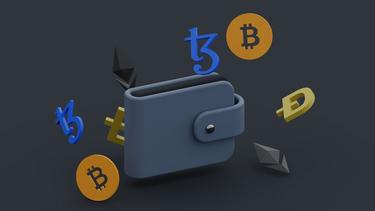Virtual value
Virtual value refers to the worth or importance that is assigned to digital assets, including virtual goods, services, and currencies within the digital economy. This value can be realized through the use of digital assets in various contexts such as online gaming, virtual marketplaces, and digital investments. Unlike physical value, virtual value is derived from the utility, scarcity, and demand for these digital resources in virtual environments.
- Determinants of Virtual Value
- Measurement of Virtual Value
- Impact on the Economy
- Challenges and Considerations
- Understanding Virtual Value in Cryptocurrency
- The Role of Market Sentiment and Speculation
- Technological Innovation and Adoption
- Scarcity and Economic Models
- Regulatory Environment and Legal Recognition
- Challenges and Risks
- Future Outlook
Determinants of Virtual Value
The value of virtual goods and assets is influenced by several factors, including:
- Scarcity: Limited availability of a virtual asset can increase its value.
- Utility: The usefulness or applicability of a virtual asset in achieving certain goals or providing services.
- Demand: The desire and willingness of users to acquire and hold virtual assets[1].
- Interoperability: The ability of a virtual asset to be used across different platforms or environments can enhance its value.
Measurement of Virtual Value
Measuring virtual value can be challenging due to the subjective and dynamic nature of digital assets. Methods include market capitalization for cryptocurrencies[2], user engagement metrics for virtual goods, and economic impact assessments for digital services.
Impact on the Economy
Virtual value plays a significant role in the digital economy, influencing online commerce, digital content creation, and investment strategies. It also raises questions about the valuation of digital versus physical assets and the future of economic transactions in increasingly virtualized markets.
Challenges and Considerations
The concept of virtual value faces challenges related to regulation, taxation, and the potential for market manipulation. Ensuring the security, transparency[3], and fairness of transactions involving virtual value is critical for its sustainable integration into the global economy.
In the realm of cryptocurrency[4], the concept of virtual value plays a pivotal role, defining the essence and driving the dynamics of this digital economy. Unlike traditional currencies, which are backed by governments or tangible assets, the value of cryptocurrencies is largely derived from the collective belief in their utility, scarcity, and potential for future application. This virtual value is both fascinating and complex, as it encapsulates various dimensions including market demand, technological innovation, and socio-economic trends.
Understanding Virtual Value in Cryptocurrency
At its core, virtual value in the crypto field refers to the worth ascribed to digital assets like Bitcoin[5], Ethereum[6], and others, based on factors beyond physical attributes. This value is not inherent but is determined by the interplay of supply and demand, technological robustness, network security, and the perceived potential of these assets to serve as mediums of exchange[7], stores of value, or units of account. The decentralized nature of cryptocurrencies, free from central bank control, introduces a unique form of value generation and distribution.
The Role of Market Sentiment and Speculation
Market sentiment and speculation significantly influence the virtual value of cryptocurrencies. Investor perception, media coverage, and market trends can lead to rapid changes in value, underscoring the volatile nature of the crypto market. Speculative investments, driven by the promise of high returns, often result in price swings that reflect the speculative rather than the intrinsic value of these digital assets.
Technological Innovation and Adoption
The virtual value of cryptocurrency is also anchored in its technological underpinnings. Innovations such as blockchain[9] technology, smart contracts[10], and decentralized finance (DeFi) platforms enhance the utility, security, and scalability[11] of cryptocurrencies, contributing to their virtual value. The rate of adoption, both by individuals and institutions, further validates the value and potential of these technologies to disrupt traditional financial systems[12].
Scarcity and Economic Models
Cryptocurrencies often have fixed supply limits, as seen with Bitcoin’s 21 million coin cap. This scarcity, akin to precious metals like gold, plays a crucial role in determining their virtual value. Economic models, including those governing supply (e.g., halving events in Bitcoin), demand, and market dynamics, influence the perceived rarity and value of these digital assets.
Regulatory Environment and Legal Recognition
The legal and regulatory environment surrounding cryptocurrencies can significantly impact their virtual value. Positive regulatory developments can lead to increased adoption and higher valuations, while uncertainty or restrictive policies may undermine confidence and suppress prices. The evolving legal landscape requires close attention from investors and stakeholders in the crypto ecosystem.
Challenges and Risks
While the virtual value of cryptocurrencies presents opportunities, it also comes with challenges and risks. Market volatility[15], security issues (such as hacks and fraud), and the potential for regulatory clampdowns pose threats to the stability and growth of virtual value in the crypto field. Understanding these risks is essential for anyone looking to invest or participate in the cryptocurrency market.
Future Outlook
The future of virtual value in the crypto field is closely tied to technological advancements, broader economic trends, and the evolving regulatory framework[16]. As cryptocurrencies continue to gain acceptance and integrate with traditional financial systems, their virtual value is likely to be further redefined, reflecting their role in a digitally-driven economy.
In summary, the concept of virtual value in the cryptocurrency field is multifaceted, influenced by a confluence of factors including market dynamics, technological innovation, scarcity, and regulatory developments. As the crypto landscape evolves, so too will the understanding and appreciation of virtual value, highlighting the need for continuous exploration and adaptation in this rapidly changing domain.
- Virtual Assets — Digital resources that have value in their use or as an investment, including cryptocurrencies and NFTs.
- Cryptocurrencies — Digital or virtual currencies that use cryptography for security and operate on a decentralized system, unlike traditional currencies.
- Transparency — The characteristic of blockchain technology that allows all transactions to be visible and verifiable by all network participants.
- Cryptocurrency — Digital or virtual currency secured by cryptography, facilitates secure, anonymous transactions.
- Bitcoin — The first and most well-known cryptocurrency, was introduced in 2009 by Satoshi Nakamoto, who developed Bitcoin.
- Ethereum — A blockchain platform with its own cryptocurrency, Ether, is known for smart contract functionality.
- Exchange — A platform where individuals can buy, sell, or trade cryptocurrencies for other digital currency or traditional currency.
- Market Sentiment — The overall attitude of investors towards a particular market or asset, influencing its price movements.
- Blockchain — A decentralized digital ledger recording cryptocurrency transactions across multiple computers.
- Smart Contracts — Self-executing contracts with terms directly written into code, facilitating, verifying, or enforcing a contract on the blockchain.
- Scalability — The ability of a blockchain network to handle a large number of transactions quickly.
- Financial systems — Complex systems comprising different institutions, including banks, markets, currencies, and policies, that support economic activities.
- Regulatory Environment — The legal and regulatory framework within which ICOs must operate, varying significantly by country.
- Legal Recognition — The process by which a legal system acknowledges the existence and validity of something as part of its regulatory framework.
- Market Volatility — The rate at which the price of a cryptocurrency increases or decreases for a given set of returns.
- Regulatory Framework — A set of regulations and guidelines established by authorities that govern the operation of financial markets and instruments.
- Tapscott, Don, and Alex Tapscott. 'Blockchain Revolution: How the Technology Behind Bitcoin Is Changing Money, Business, and the World'
- Scholz, Trebor (ed.). 'Digital Labor: The Internet as Playground and Factory'



